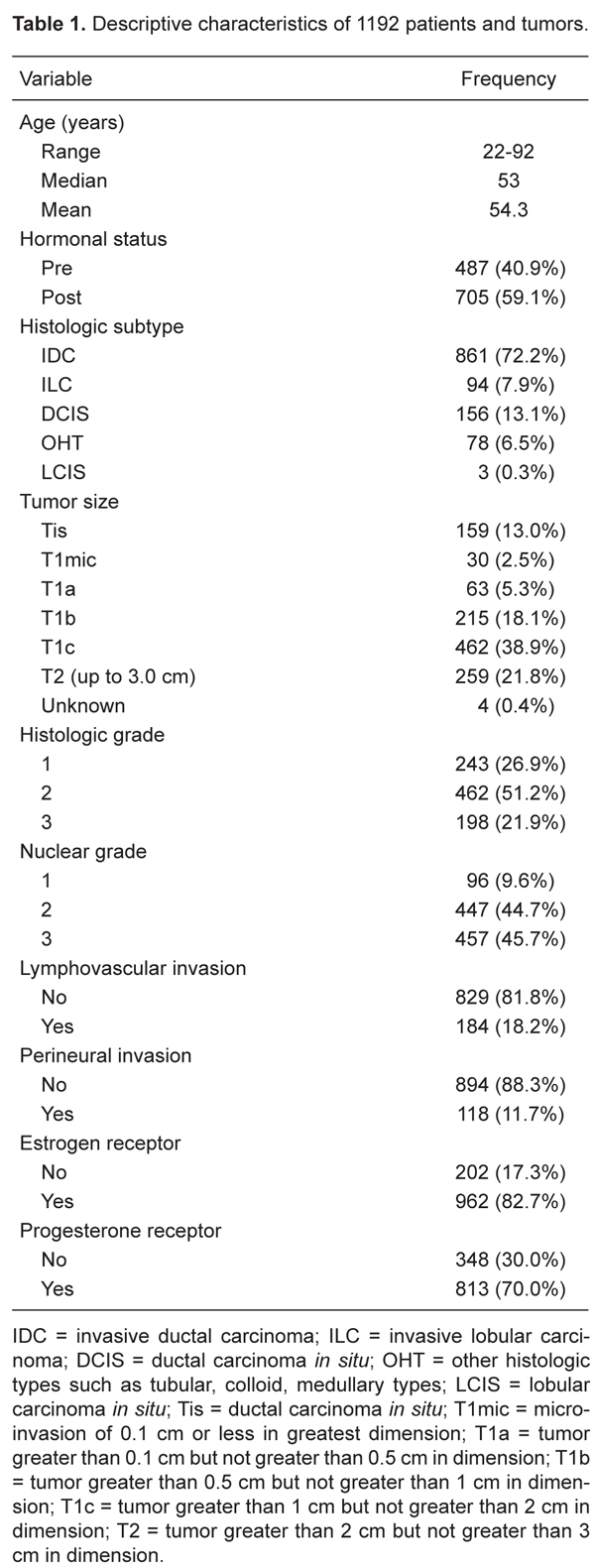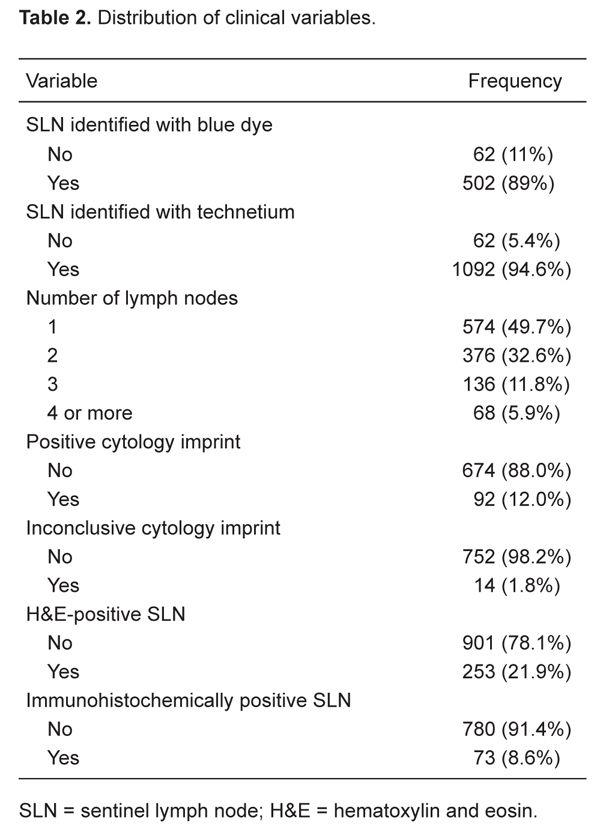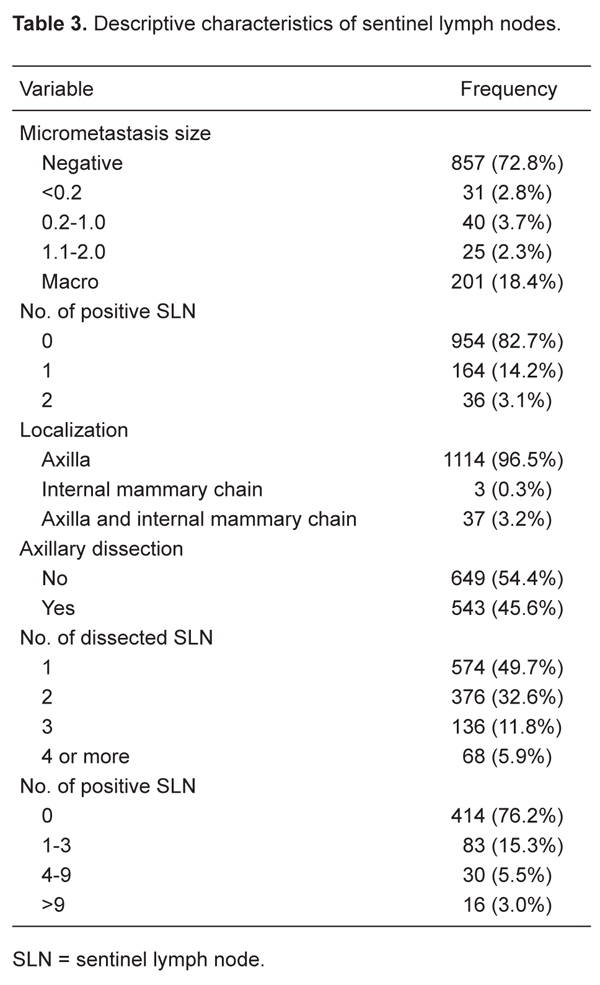Sentinel lymph node biopsy (SLNB) is an appropriate method for the evaluation of axillary status in cases of early breast cancer. We report our experience in treating cases evaluated using SLNB. We analyzed a total of 1192 cases assessed by means of SLNB from July 1999 to December 2007. SLNB processing was successfully completed in 1154 cases with the use of blue dye or radiolabeled 99mTc-Dextran-500, or both. Of these 1154 patients, 857 were N0(i-) (no regional lymph node metastasis, negative immunohistochemistry, IHC), 96 were N0(i+) (no regional lymph node metastasis histologically, positive IHC, no IHC cluster greater than 0.2 mm) and 201 were N1mi (greater than 0.2 mm, none greater than 2.0 mm). Most of the tumors (70%) were invasive ductal carcinomas and tumors were staged as T1 in 770 patients (65%). A total of 274 patients underwent SLNB and axillary dissections up to April 2003. The inclusion criteria were tumor size equal to or less than 3 cm in diameter, no clinically palpable axillary lymph nodes, no neoadjuvant therapy. In 19 cases, the SLN could not be identified intraoperatively. A false-negative rate of 11% and a negative predictive value of 88.2% were obtained for the 255 assessable patients. The overall concordance between SLNB and axillary lymph node status was 92%. SLNB sensitivity for nodes was 81% and specificity was 100%. The higher sensitivity, specificity, accuracy, and lower false-negative rates of SLNB suggest that this method may be an appropriate alternative to total axillary dissection in early breast cancer patients.
Breast neoplasms; Sentinel lymph node; Sentinel lymph node biopsy; Completion axillary dissection







